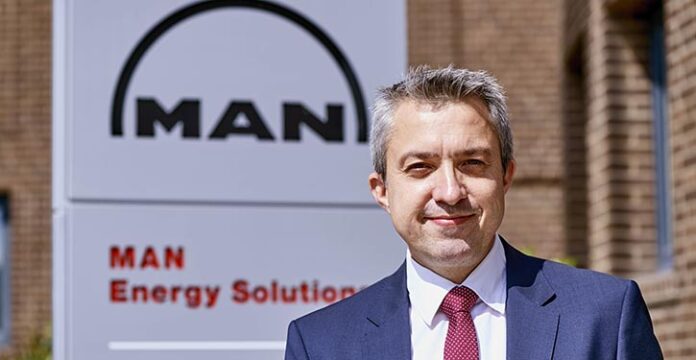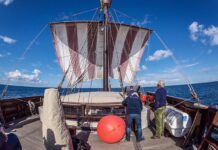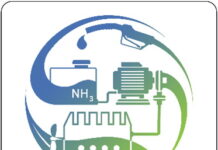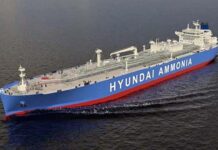MAN Energy Solutions Two-Stroke Business Unit has started the development of a low-pressure (LP) gas engine as a complement to its existing, successful dual-fuel ME-GI engine.
The project is being conducted in conjunction with Hyundai Heavy Industries and has been initiated in response to customer demand from the LNG carrier segment.
“LP gas engine costs are slightly lower reflecting the lower cost of fuel gas supply system installations,” Brian Østergaard Sørensen, Vice President, Head of R&D within 2-Stroke Business, said that both MAN and HHI had received requests for LP (low-pressure) main propulsion engines from shipowners in the gas carrier market. “We can see that initial costs (CAPEX) are much more important to the shipping owner than operational costs” explained Sørensen.
In response, MAN plans to develop an LP gas engine to serve this segment of the market, with the intention of offering LP dual fuel LNG engines in late 2021 or early 2022. The initial focus will be on developing big-bore engines for the gas carrier market, Sørensen added. The retrofit market has until now been dominated by MAN’s ME-GI engine, and the HP design was likely to remain popular given the substantial effort required to convert conventional engines to LP engines.
Copenhagen leading development
In order to meet the 2022 commercial target, MAN Energy Solutions has invested in expanding its research capacity in Copenhagen, establishing an LP technology development team alongside the existing HP technology development team. As mentioned by a speaker of MAN ES, the engine developer is also investing in a second test engine at its Copenhagen headquarters.
“The ME-GI engine is going to remain a strong pillar within MAN’s portfolio. In fact, MAN is currently working on a Mark 2 concept for the ME-GI engine” explained Brian Ø. Sørensen. Returning to the LP gas engine project, the team has been testing a number of low-pressure gas engine concepts. The engine developer has already concluded CFD modelling of a number of concepts, “…several of which vary markedly from existing LP gas engine designs,” Sørensen said.
The designer plans to begin development testing on one of its two test engines in Copenhagen in the second half of 2019. “One of our selection criteria is that the final engine design will be easy for licensee engine manufacturers to deliver, and we will be drawing on HHI’s expertise in this area.”
As the final concept has not been selected, Sørensen would not elaborate on expected differences with other LP engine concepts, except to add that it was working on a “simpler safety concept from installation to operation”.
Similarly, final confirmation on the sub-suppliers for the project would need to wait until the final design selection, although MAN was collaborating with its standard suppliers.He noted “…that MAN had considerable experience of low-pressure gas engine operation within the Four-Stroke Business Unit in Augsburg, Germany, in addition to the Two-Stroke Business Unit’s own experience. We already offer an existing range of low-pressure auxiliary engines, such as 23/30DF, 28/32DF and 35/44DF, so this will allow us to offer an entire package,” Sørensen noted and continued with: “The introduction of the low-pressure engine will fill a gap within our portfolio, but MAN’s HP gas engine offers better fuel efficiency, superior power density, and does not suffer from the same issues of methane slip that can affect LP engines” Sørensen noted, “Our mature two-stroke, dual-fuel technology has become the de-facto industry standard and accumulated over 280 confirmed sales along with 500,000 operational hours. Going forward, we want to further expand our reach within the general market for gas engines. For many segments, we expect the high-pressure ME-GI engine to remain an attractive solution. At the end of the day we want to offer our customers an alternative between HP and LP engines” he concluded.




